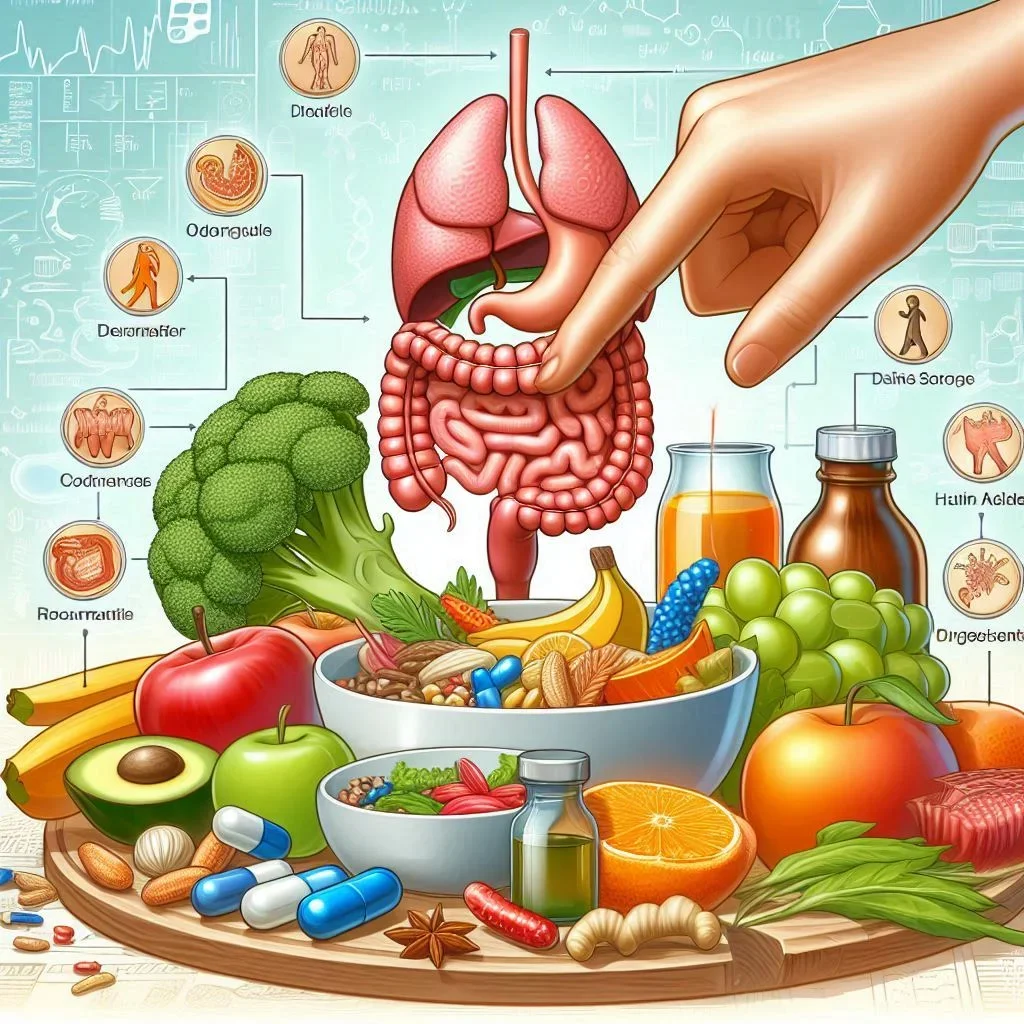Did you know that switching to a whole foods diet can boost weight loss by improving metabolism and reducing cravings? Exploring this natural approach reveals how eating unprocessed foods transforms your health and shakes up conventional dieting methods. Unlike restrictive calorie counting or fad-based approaches, the whole foods based diet to lose weight leverages nutritional science, supports long-term habits, and provides a delicious, sustainable pathway to better living.
In this comprehensive guide, we’ll explore the proven science behind a whole foods based diet, debunk common myths, and equip you with actionable steps and a meal plan to start your weight loss journey today.

Unlocking the Science: Why a Whole Foods Diet to Lose Weight Works
The whole foods based diet to lose weight isn’t just a trend—it’s deeply rooted in nutritional science. When you switch from processed food to whole foods, your body receives more fiber, vitamins, and minerals, while consuming fewer empty calories and added sugars. Scientific evidence shows that whole foods—such as vegetables, fruits, whole grains, lean proteins, and healthy fats—promote satiety, stabilize blood sugar, and boost metabolism, making them ideal for weight loss. A diet rich in plant foods contains naturally occurring compounds that reduce inflammation and manage hunger hormones, making it easier to make healthier food choices and maintain weight loss over time.
Multiple studies reveal that people following a whole foods based diet tend to eat fewer calories naturally, thanks to the higher water and fiber content of these plant foods. Moreover, avoiding heavily processed foods lowers your intake of sodium, added sugars, and saturated fats, which are often linked to weight gain, heart disease, and other chronic health conditions. In several control group trials, those on a whole foods diet experienced greater reductions in body weight and improvements in overall health metrics compared to groups consuming standard processed diets.
"Switching to a whole foods diet can boost weight loss by improving metabolism and reducing cravings."
As you explore the benefits of whole foods, it’s also worth considering how specific nutrient-dense options can support your goals. For example, incorporating foods like pumpkin seeds offers unique nutritional advantages for weight loss due to their protein, fiber, and healthy fat content.
What Is a Whole Foods Diet to Lose Weight?
Defining whole foods and their role in weight loss: Whole foods are foods in their most natural, unprocessed state—think apples instead of apple-flavored cereal. They’re free from added sugars, preservatives, artificial flavors, and excess saturated fats, making them optimal for weight management and overall health.
Difference between whole foods diet and processed food diets: A whole foods diet to lose weight prioritizes minimally processed food sources, whereas processed foods often pack extra calories, refined grains, and unhealthy fats. Heavily processed items disrupt your satiety cues and often contribute to weight gain.
Key principles of a foods diet for effective weight loss: Focus on nutrient-dense plant foods, lean proteins (like fish, eggs, and poultry), whole grains (oatmeal, brown rice, quinoa), healthy fats (unsaturated fat from nuts, seeds, olive oil), and moderate portions to create an effective meal plan. The core aim: eat close to nature for optimal results.

How Whole Foods Diet Promotes Weight Loss
Calorie density: Why whole foods are naturally low in calories: Whole foods—especially plant foods—tend to be high in fiber and water, making them lower in calorie density. This means you can eat satisfying portions while consuming fewer calories, a key for anyone aiming for weight loss.
Nutrient profile: Essential vitamins, fiber, and plant foods: A whole foods based diet provides essential nutrients, including vitamins, minerals, healthy fatty acids, and phytonutrients. These foods are often high in fiber, which slows digestion, provides lasting satiety, and helps control blood sugar spikes.
Role of processed foods and their impact on weight gain: Processed foods are typically loaded with added sugars, saturated fats, preservatives, and excess salt. Research links regular consumption of processed foods to higher calorie intake, poor food choices, and an increased risk of weight gain and chronic diseases, such as heart disease and hypertension.
"A diet low in calorie density and high in nutrients makes losing weight feel effortless."
Step-by-Step Guide to Starting a Whole Foods Diet to Lose Weight
Assess your current diet and identify processed foods: Begin by tracking your meals for a week and circling any highly processed items—think packaged snacks, sugary cereals, and ready-to-eat frozen meals. Awareness is the first step toward healthier food choices.
-

Create a meal plan based on plant foods, lean proteins, and whole grains: Build your meal plan around vegetables, fruits, legumes, whole grains like brown rice or quinoa, lean meats, and unsaturated fat sources such as avocados or olive oil. Try to include a variety of colors on your plate at each meal for maximum nutrition.
Shopping tips for stocking up on whole foods: Stick to the perimeter of the grocery store, where fresh produce, dairy products, eggs, and meats are located. Buy in-season fruits and vegetables, opt for bulk grains and legumes, and choose items labeled as ‘no added sugar’ or ‘minimally processed’.
Meal prepping for weight loss success: Prepare meals in advance with batch-cooked grains, washed and chopped vegetables, and pre-portioned proteins. Store them in glass containers for easy access, which can reduce the temptation to reach for processed or convenience foods during busy days.
Sample Meal Plan: Whole Foods Diet to Lose Weight

Day |
Breakfast |
Lunch |
Dinner |
Snack |
|---|---|---|---|---|
Monday |
Oatmeal, berries, walnuts |
Quinoa salad with chickpeas and mixed veggies |
Grilled salmon, brown rice, steamed broccoli |
Fresh apple, handful of almonds |
Tuesday |
Greek yogurt, chia seeds, honey |
Turkey breast wrap with lettuce, tomato, whole grain tortilla |
Stir-fried tofu, brown rice, sautéed kale |
Carrot sticks, hummus |
Wednesday |
Egg scramble with spinach and peppers |
Lentil soup, whole grain bread |
Roasted chicken, sweet potatoes, green beans |
Orange slices, sunflower seeds |
Thursday |
Smoothie (banana, spinach, almond milk, flaxseed) |
Mixed bean salad, avocado, tomatoes |
Baked cod, brown rice, roasted carrots |
Cucumber slices, cherry tomatoes |
Friday |
Steel-cut oats, blueberries, pumpkin seeds |
Salmon poke bowl with brown rice and edamame |
Veggie stir-fry with tofu and quinoa |
Pear, handful of walnuts |
Saturday |
Scrambled eggs, sautéed mushrooms, whole grain toast |
Chicken breast salad with mixed greens |
Beef stew, roasted parsnips, Brussels sprouts |
Mixed berries |
Sunday |
Greek yogurt, sliced kiwi, chopped pistachios |
Vegetable minestrone soup, whole grain roll |
Oven-baked salmon, wild rice, asparagus |
Apple slices, almond butter |
Common Myths and Misconceptions about Whole Food Diets to Lose Weight
Do you have to go completely plant-based to succeed?
No, a successful whole foods diet to lose weight doesn’t require giving up all animal products. Lean meats, fish, eggs, and dairy products (when minimally processed) can be included for those who choose not to go plant-based. The primary goal is focusing on unprocessed, nutrient-dense foods rather than rigid dietary labels.-

Are all processed foods bad when trying to lose weight?
Not necessarily. Some minimally processed foods (such as canned beans, frozen veggies, or whole grain bread) can fit within a healthy whole foods meal plan. The concern is with “ultra-processed” foods high in added sugars, refined grains, and saturated fats that contribute to weight gain.Is a whole foods diet expensive?
While certain whole foods (like organic produce) can be pricier, savvy shopping for in-season produce, buying in bulk, and reducing spending on packaged snacks can make a whole foods diet to lose weight affordable and accessible.
The Role of Calorie Density in a Whole Foods Diet to Lose Weight
-
How choosing low-calorie-dense foods aids weight loss:
Calorie density is a measure of how many calories are in a given volume of food, and choosing foods low in calorie density supports effective weight loss. Foods low in calorie density—like most vegetables and fruits—allow you to eat larger portions while still consuming fewer calories. This helps you feel satisfied with less, making weight loss feel less restrictive and more sustainable. Scientific evidence consistently demonstrates that diets focused on lower calorie density contribute to steady weight loss and improved satiety. Examples of high- and low-calorie-density whole foods:
Low in calorie density: leafy greens, cucumbers, tomatoes, berries, melons. Moderate: brown rice, whole grain pasta, legumes. High in calorie density: nuts, seeds, avocados, and cheese. While high-calorie-dense foods aren’t inherently bad, mindful portion sizes are important for weight management.
Addressing Cravings and Emotional Eating on a Whole Foods Diet to Lose Weight
Why whole foods reduce cravings:
Whole foods are “high in fiber”—they keep you full longer and stabilize blood sugar, preventing the energy crashes that drive cravings. Additionally, eating a diet rich in protein and healthy fats from whole food choices helps regulate appetite hormones and reduces the urge to snack on highly processed foods.Tips for overcoming emotional eating and processed food temptation:
Plan structured meals and snacks to avoid erratic eating. Practice mindful eating—pause and assess if hunger is physical or emotional. Keep healthy snacks visible and processed food out of reach. Lastly, seek support—whether through a registered dietitian, friend, or family—for accountability and motivation.
Long-Term Health Benefits of a Whole Foods Diet to Lose Weight
Improved metabolism and digestion: The fiber and nutrients in whole foods support your gut health, regulate digestion, and improve metabolic rate, making it easier to maintain weight loss and overall wellbeing.
Reduced risk of chronic disease: A whole foods-based diet is linked to lower risks of heart disease, hypertension, type 2 diabetes, and some cancers—thanks to the abundance of antioxidants, phytochemicals, and healthy fats like unsaturated fat.
Sustainable, long-lasting weight loss: Unlike crash diets, whole foods encourage realistic, maintainable habits that contribute to weight management for years to come.
Whole Foods Diet to Lose Weight: Real-Life Success Stories
"Adopting a whole foods based diet helped me lose 30 pounds in six months—and I've kept it off for years."

People Also Ask: Whole Foods Diet to Lose Weight
Can you lose weight on a whole food diet?
Answer: Yes, a whole foods diet to lose weight is effective because it focuses on nutrient-dense, naturally low-calorie foods that support metabolism and reduce cravings.
What is the 30/30/30 rule for weight loss?
Answer: The 30/30/30 rule suggests consuming 30 grams of protein within 30 minutes of waking and engaging in 30 minutes of movement, making it a simple structure that can complement a whole foods diet to lose weight.
How to lose 20 pounds in a month?
Answer: Rapid weight loss is not recommended, but a whole foods diet to lose weight can significantly support healthy weight loss by promoting a calorie deficit, improved metabolism, and reduced processed food intake.
What is the 21 day whole food reset?
Answer: The 21 day whole food reset is a program focused on eating exclusively whole, unprocessed foods for 21 days to reset cravings, metabolism, and promote weight loss.
-

FAQs: Whole Foods Diet to Lose Weight
Which foods are best for weight loss on a whole foods diet?
Leafy greens, berries, legumes, lean proteins, whole grains (like brown rice and quinoa), nuts, and seeds are all excellent choices. These foods provide nutrients, fiber, and protein to help you lose weight and feel satisfied.Can you eat whole grains on a whole foods diet to lose weight?
Absolutely! Whole grains such as brown rice, oats, quinoa, and whole grain bread are packed with fiber and nutrients. They support digestion, maintain satiety, and help manage blood sugar.Does a whole foods diet restrict calories?
Not directly. By focusing on foods lower in calorie density and high in fiber, you’ll likely consume fewer calories without strict tracking. However, mindful eating and portion sizes are still key for weight loss.Is vegan or vegetarian required for a whole foods diet to lose weight?
No. While a plant-based approach offers many benefits, including animal-based whole foods—such as eggs, fish, or dairy—can still align with the principles of a whole foods diet for weight loss.
Key Takeaways: Why Choose a Whole Foods Diet to Lose Weight?
Focus on unprocessed, nutrient-dense foods enhances weight loss
Reduces cravings, promotes satiety, and supports metabolism
Sustainable, life-long results compared to crash dieting
Conclusion: Transform Your Journey with a Whole Foods Diet to Lose Weight
Embracing a whole foods diet to lose weight empowers you to achieve sustainable results, improve your health, and move beyond fleeting diet trends. Start making small, actionable changes today—and unlock the real, lasting transformation that comes from eating close to nature.
If you’re inspired to take your wellness journey even further, consider how your daily habits and lifestyle choices can amplify the benefits of a whole foods diet. Prioritizing restorative sleep, for example, can enhance metabolism, support appetite regulation, and accelerate your progress. Discover practical strategies for optimizing your nightly routine in our guide on how to sleep effectively for better health. By combining mindful nutrition with quality rest, you’ll unlock a holistic approach to weight loss and long-term vitality—empowering you to thrive from the inside out.
Sources
Adopting a whole foods diet can significantly enhance weight loss by focusing on unprocessed, nutrient-dense foods that support metabolism and reduce cravings. For a comprehensive understanding of how whole foods contribute to weight management, consider exploring “The Whole Foods Weight Loss Eating Plan” by Livestrong. This resource delves into the benefits of whole foods, offering practical tips and meal ideas to help you transition away from processed foods and achieve sustainable weight loss. (livestrong.com)
Additionally, “Whole Foods to Eat to Lose Weight” by Bradford Wellness Co. provides a curated list of whole foods that are particularly effective for weight loss. This guide highlights specific foods like leafy greens, berries, and lean proteins, explaining their roles in promoting satiety and boosting metabolism. (bradfordwellness.co)
By incorporating these resources into your journey, you’ll gain valuable insights and practical strategies to make informed dietary choices, paving the way for effective and lasting weight loss.
 Add Row
Add Row  Add
Add 




Write A Comment